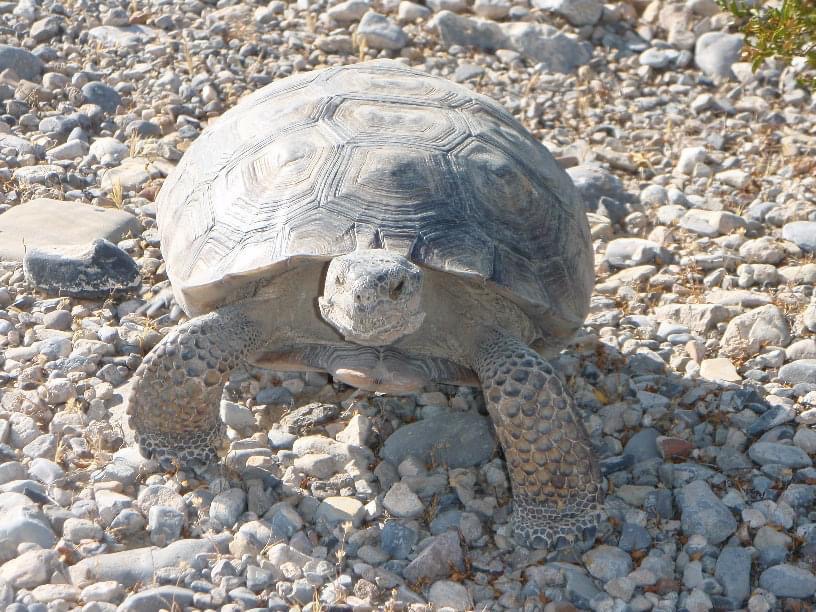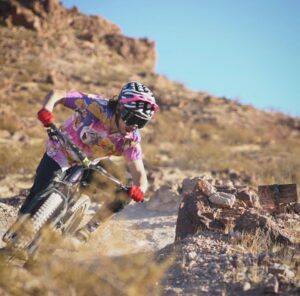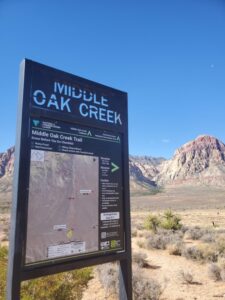As the season changes, make sure to be aware of our tortoise friends!
This week, we welcome guest blogger Kristi Holcomb. Kristi is a biologist who has worked with desert tortoises for most of her career and she is here to share some tips for what to do when you encounter a tortoise on a trail.
Spring is just around the corner and that means one thing to a desert tortoise biologist like myself. It’s active season! While the exact dates depend on the weather, desert tortoises are typically most active between March 1st and October 31st. Spring and fall are their favorite seasons, but they also like early summer mornings. Coincidentally, these are also the best times to go mountain biking and hiking.
Have you ever seen a desert tortoise on one of your adventures? Most people in Las Vegas will tell you they’ve never seen a desert tortoise. That’s likely because tortoises spend up to 95% of their lives in underground burrows and when they are out of their burrows, well…they look like a rock.
It seems to be a different story when talking to members of outdoor communities, though. Our trails bring us into otherwise unscathed desert where tortoises find refuge from the human impacts of life near the city limits. It’s not uncommon to see a desert tortoise using our trails as little highways or prime basking spots. Because of this, if you adventure in the area, you may find yourself on a collision course with one of these important critters.
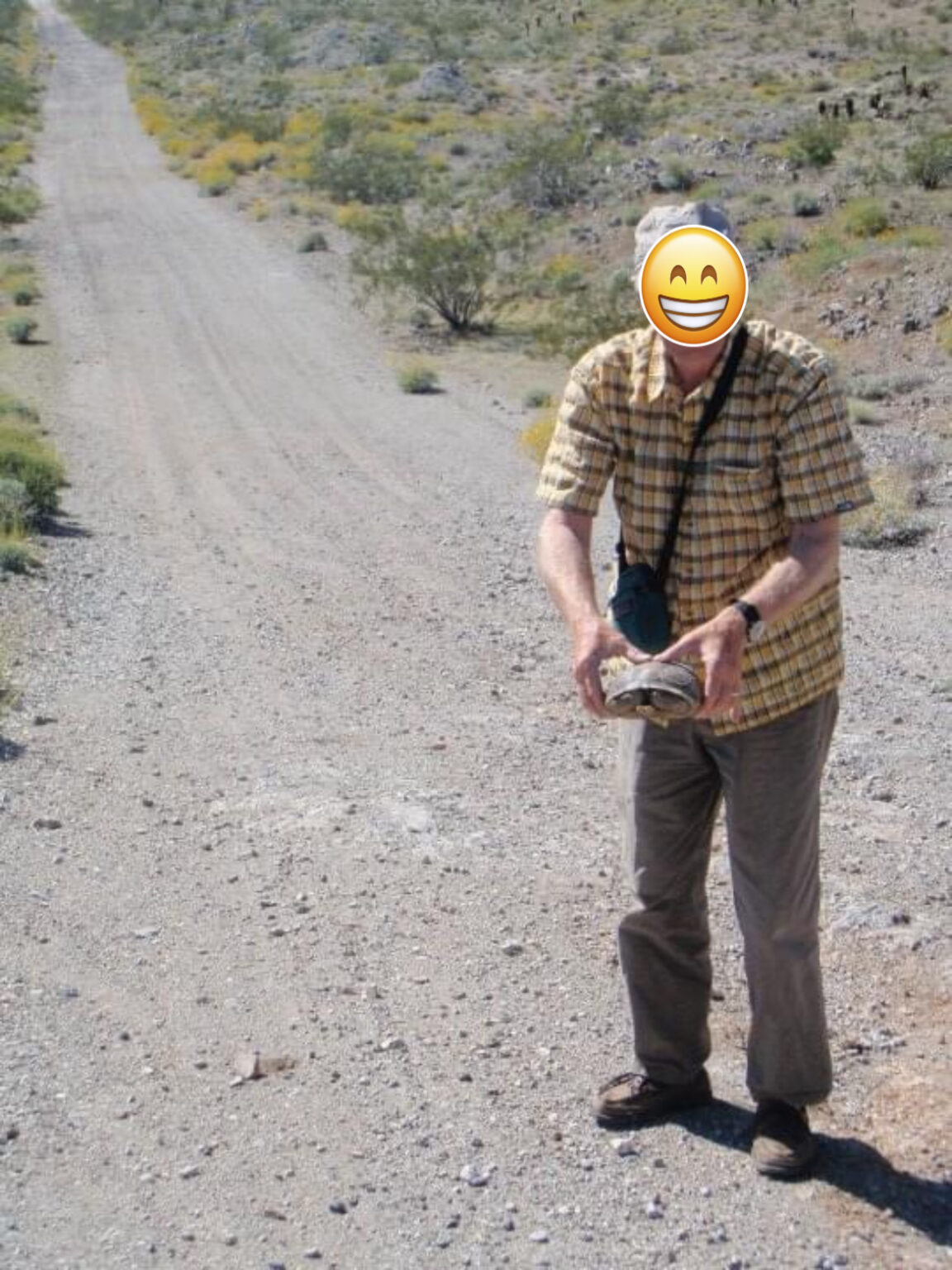
Tortoises are Protected
The Mojave desert tortoise is protected under the Endangered Species Act (ESA) due to declining populations and as such it is illegal to harass, harm, or kill one. Handling of a wild desert tortoise is prohibited under the ESA because it can easily be considered harassment and lead to harm or even death. Improper handling of a desert tortoise can cause the tortoise to void its bladder (urinate on you) as a defense mechanism. Since tortoises store water in their bladder for up to a year and continuously recycle it through their system, losing this precious water can very well be deadly in the dry desert.
The Do's and Dont's
Given this, what can a good-hearted person do when they find one basking in the middle of a trail? If you’re lucky, the tortoise will pose for a quick photo and then casually move off the trail away from you. (Please make sure you take your photo from a respectful distance). Keeping your voice low and your movements calm will reduce the stress to the tortoise and may keep it from hiding in its shell.
Depending on your activity and the type of trail you are on, you may not need to do anything more than that. For example, if you find a large tortoise on a trail used only for hiking, there really isn’t much danger to the tortoise and you should let it move on it’s own accord. If It’s a hatchling tortoise or on a trail with mountain bike use, it may be in danger of being stepped on or hit. Assess the danger of the tortoise in its current situation, taking into account its size. If you decide the tortoise needs to move off the trail, there are some steps you should take before picking it up.
First, you wait. Remember your childhood cartoons, these are not fast creatures. Sit down about 5 feet from the tortoise and have a snack. You’ll be far enough away that the tortoise won’t feel threatened, but close enough to warn another rider or hiker of its presence. If the tortoise refuses to move on its own after about 10 minutes, simply standing behind the tortoise and giving it a gentle tap on the backside with your shoe, or tickling a back foot, should prompt some movement. You may have to shuffle behind the tortoise at a slow pace to keep it motivated to move a safe distance off trail. It is important to encourage the tortoise to move in the direction it was heading. As you’ve likely already seen, they can be very stubborn and will attempt to re-cross the trail if they end up on the wrong side.
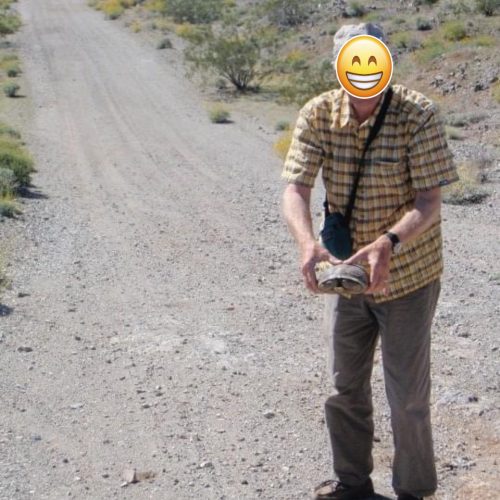
If the “wait it out” and the “foot-tickle” techniques fail to work or you are on a busy trail where there is risk for both you and the tortoise from another hiker or rider, there is an ESA clause for this situation. It’s nicknamed the Good Samaritan Clause and permits a well-intentioned person of handling a tortoise that is in “imminent harm’s way.” This clause should only be used when the current risk to the tortoise outweighs any risk associated with you handling it. It’s very important to handle the tortoise properly to Avoid the Void:
-
Firmly pick up the tortoise, holding it on either side of its shell (like a sandwich!). If you’ve found yourself a small hatchling, you can hold it on one side and place your other hand underneath it for added support.
-
Don’t be too firm with the little ones, as their shells don’t harden until they are about 6 inches long.
-
The tortoise should be facing away from you and held away from your body.
-
While you can pick it up and hold it at waist level, since you should only be moving it a short distance it’s better to keep it low to the ground as you awkwardly shuffle it across the trail. Don’t be surprised if the tortoise starts “swimming” or pulling at your hands with its claws.
-
Remember to stay quiet, calm, and confident as you move it 5-10 feet off the trail.
-
Only move it in the direction it was heading. If it was heading straight down the trail, you will have to make a judgement call.
-
If possible, hang around for a few minutes to ensure the tortoise doesn’t head right back to the trail. Then you can resume your adventure with a smile, knowing you just saved a threatened species.
To learn more about the Mojave desert tortoise, visit https://www.mojavemax.com


